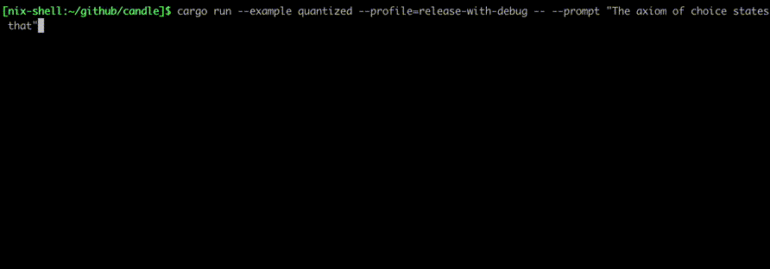- Candle revolutionizes machine learning in Rust, prioritizing performance and accessibility.
- It addresses challenges posed by traditional frameworks like PyTorch, offering a minimalist alternative.
- Candle eliminates Python overhead and the Global Interpreter Lock (GIL), enhancing performance and reliability.
- With optimized CPU and CUDA backends, Candle ensures lightning-fast inference and efficient GPU utilization.
- Support for WebAssembly (WASM) extends Candle’s reach to web environments, facilitating lightweight deployment.
Main AI News:
In the realm of machine learning, efficiency is paramount, driving innovation and progress across industries. However, navigating through the complexities of existing frameworks like PyTorch often feels like traversing a labyrinth, with hurdles such as sluggish cluster instantiation and Python-induced performance bottlenecks hindering seamless deployment.
Enter Candle, a game-changing minimalist machine learning (ML) framework meticulously crafted for Rust aficionados. Gone are the days of grappling with bloated libraries and convoluted syntax – Candle offers a streamlined approach without compromising on power or versatility.
While alternatives like dfdx and tch-rs have attempted to fill the void, they remain shackled by their own limitations. dfdx, while commendable for its type-enforced shape inclusion, teeters on the edge of complexity, requiring nightly features and daunting non-Rust experts. On the flip side, tch-rs beckons with its promise of torch library bindings in Rust, yet its unwieldy runtime overhead may deter those seeking efficiency.
Candle transcends these constraints, embodying the ethos of Rust’s performance-driven philosophy while ushering in a new era of simplicity and speed. With a syntax reminiscent of PyTorch, Candle beckons developers into a realm where seamless deployment and blazing-fast inference are the norm.
At its core, Candle is engineered to obliterate the shackles of Python overhead and the dreaded Global Interpreter Lock (GIL), unleashing the full potential of Rust’s native capabilities. This marriage of performance and reliability paves the way for serverless inference, empowering developers to deploy lightweight binaries with unparalleled efficiency.
But Candle’s prowess extends beyond mere CPU optimization – its CUDA backend unlocks the raw horsepower of GPUs, facilitating lightning-fast processing of massive datasets. Whether it’s real-time applications demanding split-second decisions or high-throughput tasks necessitating rapid data crunching, Candle rises to the occasion with unwavering speed and precision.
Moreover, Candle’s support for WebAssembly (WASM) heralds a new era of accessibility, enabling seamless integration within web environments. This democratization of machine learning empowers developers to transcend traditional boundaries, ushering in a future where intelligence knows no bounds.
Conclusion:
The emergence of Candle marks a significant shift in the machine learning market, offering a compelling alternative to traditional frameworks. Its focus on performance, coupled with its accessibility and ease of use, positions Candle as a formidable contender in the Rust ecosystem. With Candle’s ability to streamline deployment and maximize hardware utilization, businesses can expect enhanced efficiency and accelerated innovation in their machine learning endeavors.

